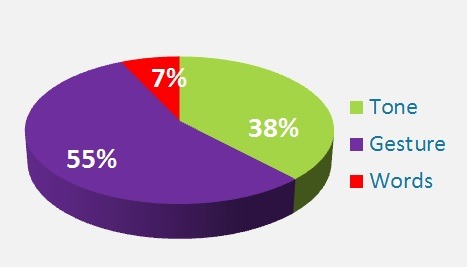Communication skills in a diverse and multicultural environment

The price YOU pay for poor communication:
Health: high level of stress due to frustration
Budget: between 25% and 40% of your annual budget
Productivity: $26,041 of productivity loss per worker per year
Customer service: decrease of customer satisfaction
Change management: ineffectiveness in growing yourself and your organization
Engagement: Employees’ disengagement
Downtime
Late project deliveries
Among all the challenges in a multi-cultural environment undoubtedly the most difficult to handle is the communication skill as it is how we express ourselves, share information, develop relationships, establish trusts and above all build a multicultural environment even with the establishment of a Creole language. Even the native users of a language have trouble with the proper understanding of certain expressions- either verbal or non-verbal, accents, or dialects of sub-cultural groups in a country.
Verbal Communication Skills in a multi-cultural Environment:
Apparently, to its basic level communication is quite easy with a limited knowledge of a different language; however a successful communication in a working environment requires a high level of expertise. For example, English, the most widely spoken language, can put a native user of this language in difficulties while talking to a person from another English speaking nation as the accents, word usage, and dialects varied to a great extent in the UK English, US English or in Australian English. So, the verbal skill involves your ability to understand different accents, to use it in an internationally recognizable pronunciation and to master the word-craft-ship in the better correlation with the signifier and signified.
For an effective communication even the underlying or implied meaning of a statement has to be known along with the linguistic one as in almost every culture idiomatic expressions are very common to be used widely. Additionally the cultural-bound terms may have the chance to bewilder you even if you are a native user of a language as these sorts of terms are identical to a particular location in a country. For instance, as the concept of a ‘knock, knock joke’ may not be understood by someone carrying another cultural traits. Some other culture-bound words as picked up by Chad Lewis are ‘pie chart’, ‘high five’, ‘get out of jail free card’, ‘touchdown’, ‘piggy bank etc. which are commonly used in the United States but may be hard to understand to people from different states.
Non-Verbal Communication Skills in a multi-cultural Environment:
Chad Lewis, in his Successful Communication in Multi-cultural Environments, orchestrates how the non-verbal expressions matter to the successful communication under a diverse cultural rainbow. To him even the secondary channels like smell, movement (fidgeting), our body position (posture), facial expressions, yawning to convey a message are important to have a control over, though it not always possible to do so. For example, seeing a person riding a bi-cycle we can guess that the person is too poor to own a car, he or she has a low social status or perhaps the person had their driving license revoked, though the person might have used it just for being environmentally friendly.
Another challenge of the communication in a diverse setting lies in the fact that the secondary channel to convey an expression may be interpreted just opposite to people with other cultural identity. So learning the body language, personal space or distance in a conversation, and intonation being practiced in a particular community can be very crucial to have learned to develop your communication skill.
In communication, kinesics that refers to the usage of body language, gestures, eye-contacts etc. can be another issue to pose challenges in a diverse culture. In some places eye-contact is treated as a sign of paying attention or showing interest, but still there are communities that would rather readily take it as a sign of aggression. Again, head wobbling being used in India as a body language to answer a question can lead to misinterpretation to some other cultural context. One more example can be cited in this regard is a physical movement like giving a quick pat on the back to show support or encouragement to a colleague can put you in an awkward situation as there are places where touching of any kind especially between the opposite sexes is strictly prohibited.
Intonation conveying a non-verbal message can be another communication challenge for a diverse group as the meaning associated with it is not universal. For instance in the sentence, ‘you are going to party’, the accent on the word, ‘party’ would indicate a question for one group while some other groups may take it as an expression of anger or irritation.
Schedule Today a Free Meeting for Your Needs: Schedule Appointment
Tips and Tools to Improve Collaboration and Increase your Bottom Line
Don’t judge
Notice what you do and how you do it
Understand your communication style and others people style by taking a DiSC & Motivators assessment
Fill the gap between two communication styles
Be perceived for who you truly are and not for who people think you are
Reward yourself and others according to interests, values and drivers
You will not only enhance your personal and professional relationships but notice a change in a way your interact with others. You will finally feel heard and understood. People will collaborate with you and help you reach your goals. You will feel empowered and confident you can get things done. You will as well dramatically increase your results, reduce your level of stress and improve the quality of your relationships.
Organizations have recorded a $13000/employee increase in their bottom line by simply creating awareness about Communication Skills and developing their teams. It can represent up to +19.2% in Operating Income.


